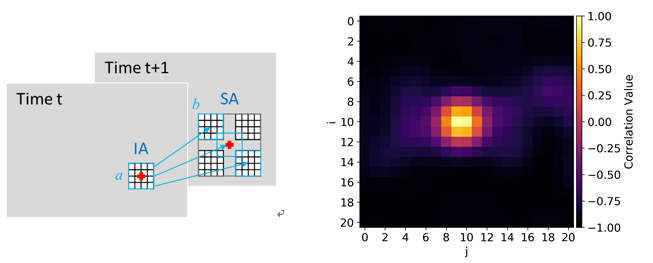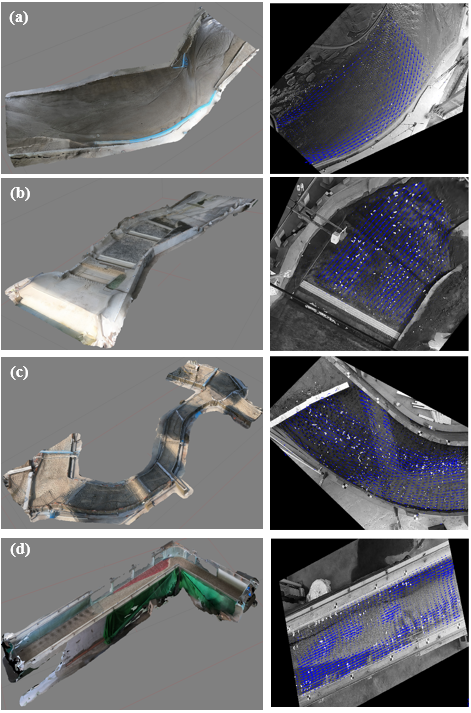The discharge of river is the most important information in the water resource planning. Recently, one of the new techniques, “Large-Scale Particle Image Velocimetry (LSPIV)”, is widely used in measuring the surface flow velocity and estimating the discharge in the field. LSPIV is a nonintrusive approach to measure velocities at the free surface of a water body. Measurements conducted in typical conditions in conjunction with appropriate selections of parameters for image processing resulted in mean velocity errors of less than3.5%.
Conventional PIV entails four components: flow visualization, illumination, image recording, and image processing. Given that LSPIV images cover large areas usually recorded from an oblique angle to the flow surface, an additional step is customarily involved: image orthorectification. The LSPIV measurement sequence is illustrated in Figure 1. In essence, PIV is the techniques of pattern matching technique is applied to image intensity distribution in a series of images, as illustrated in Figure 2. The similarity index for particle patterns enclosed in a small interrogation area (IA)fixed in the first image is calculated for the same-sized window within a larger search area (SA) selected in the second image. The window pair with the maximum value for the similarity index is assumed to be the pattern’s most probable displacement between two consecutive images. Once the distance(∆x) between the centers of the respective small window is obtained, velocity(u) can be calculated by dividing it with the time difference (∆t) between consecutive images.
.png)
The Water Resources Planning Institute recently used PIV measurement technology and conduct measurement experiments on four different hydraulic models(Figure 3). In the near future, PIV technology can improve measurement efficiency and replace traditional contact and manual measurement.
 Figure 1. LSPIV measurement sequence
Figure 1. LSPIV measurement sequence
 Figure 2. Concept of the LSPIV image processing algorithm
Figure 2. Concept of the LSPIV image processing algorithm

Figure 3. PIV measurement experiments on four different hydraulic models.(a)Daan River model (b)Dajia River model (c) Erchong Floodway model (d) Embankment Scour model